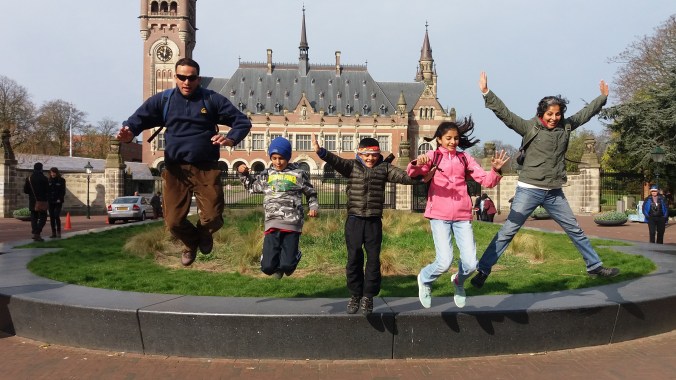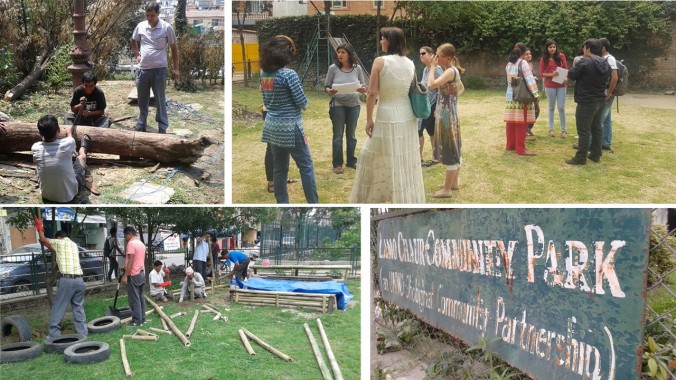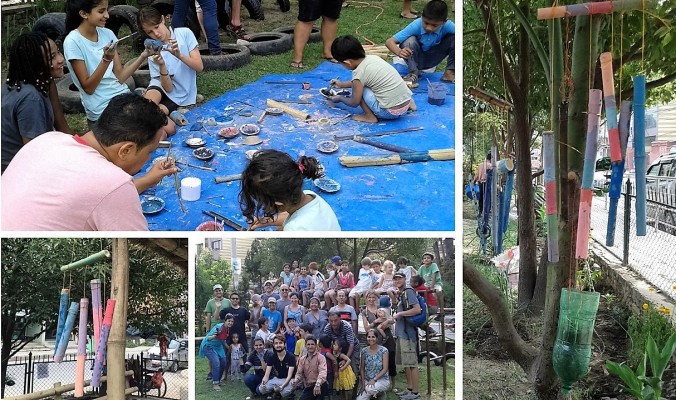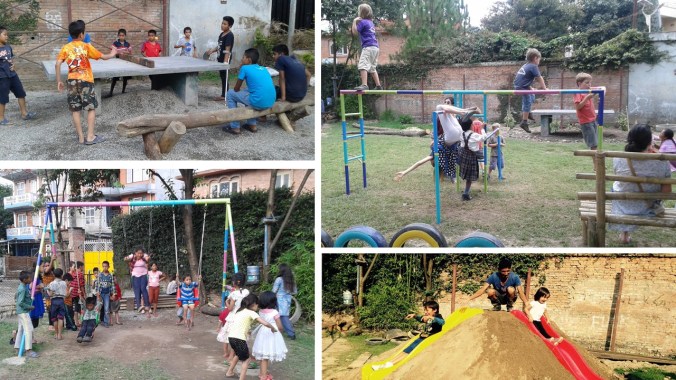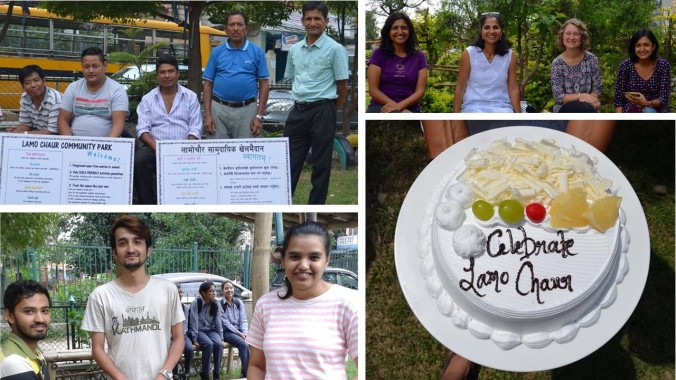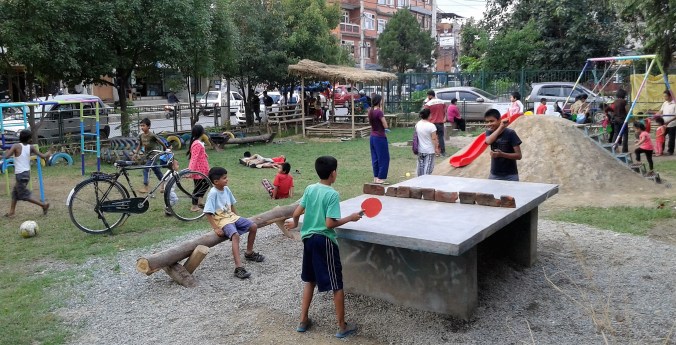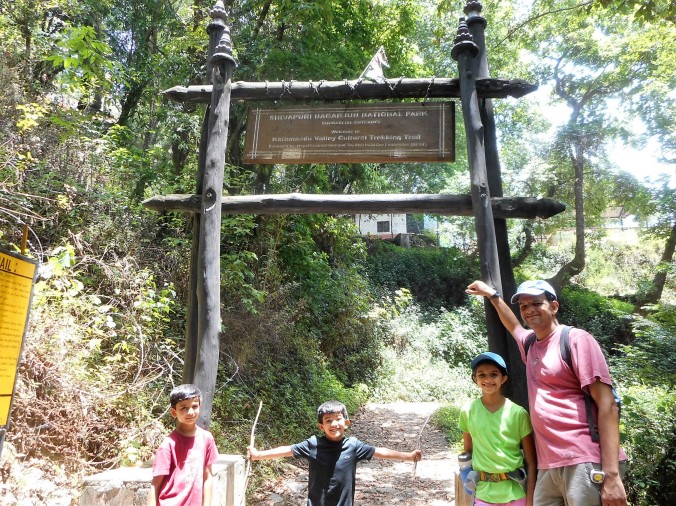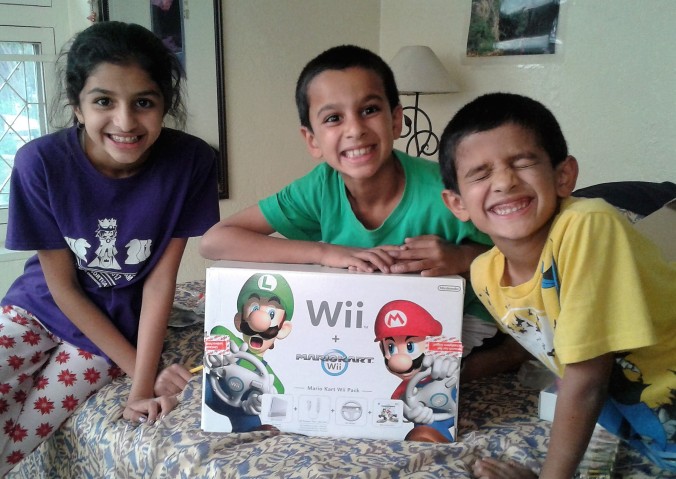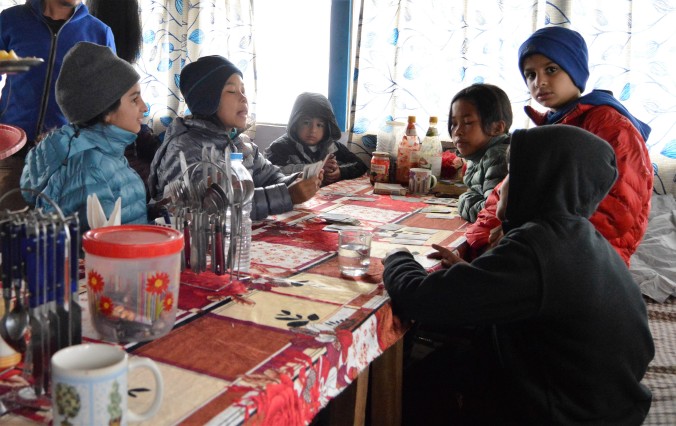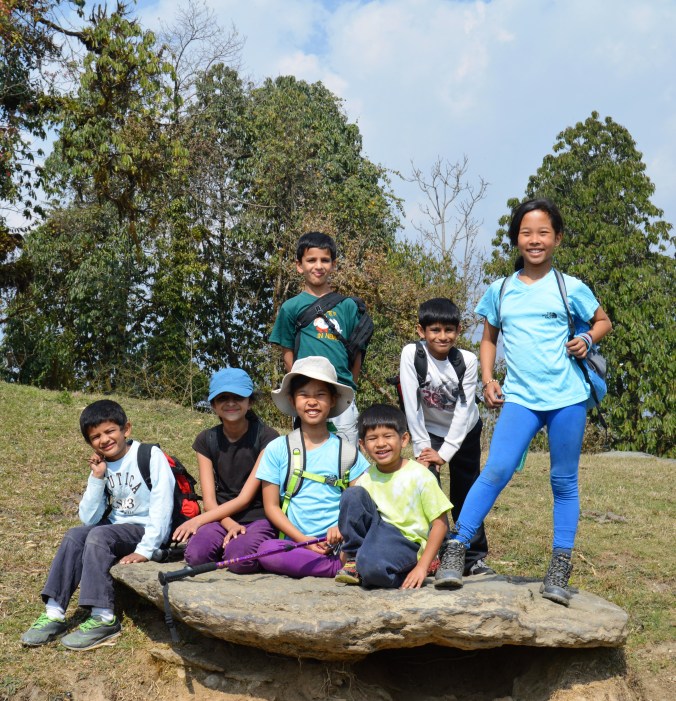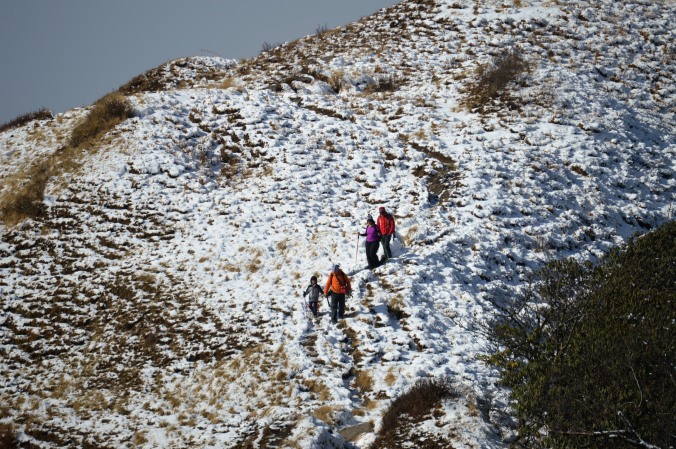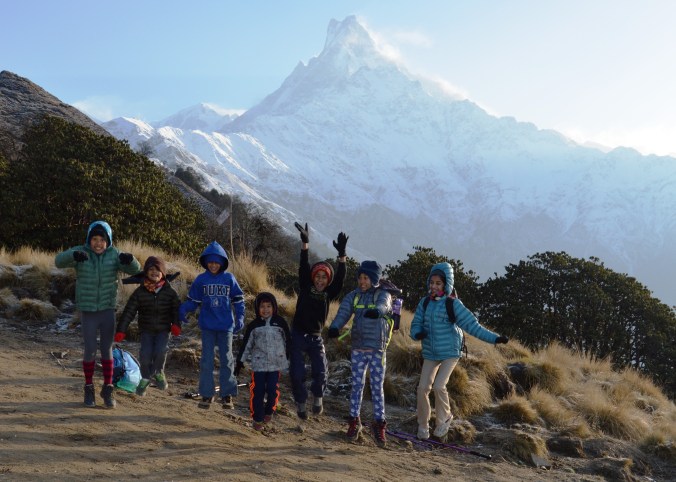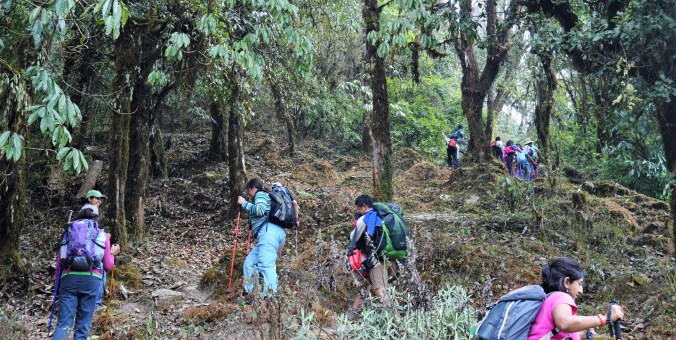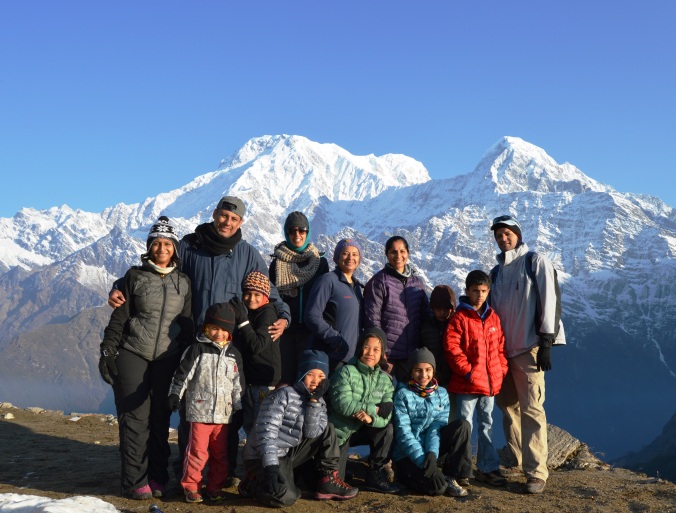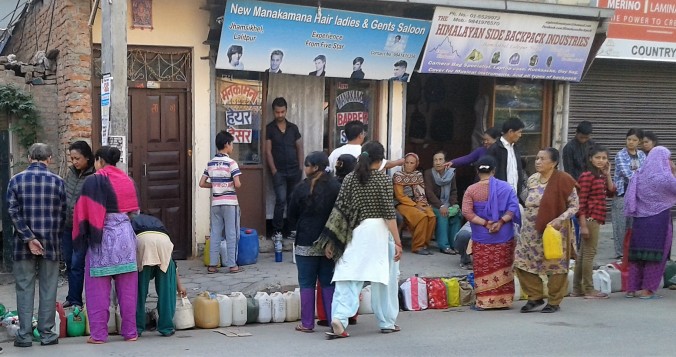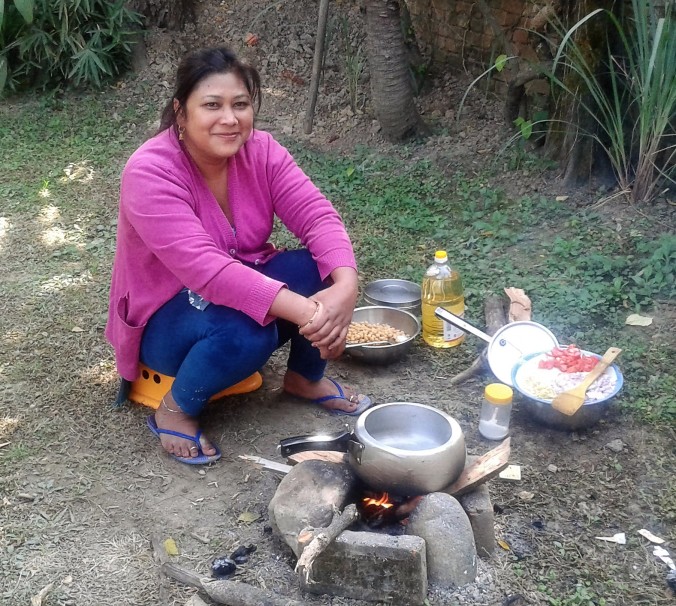I understand that it is so difficult for those abroad to fathom what we are going through here and how life really is. There is such a broad range in how dramatically the Maha Bhukamp impacted peoples’ lives. We are all getting used to a “new normal” – for some that is far different from the original, for others there aren’t too many changes…
Some have fewer family members, some have additional house guests, some are living under a different roof, some have no work, some haven’t stopped working since the quake hit. The “new normal” might look very different or very similar, but for all of us, nothing feels the same… I attempt to paint a picture of how our lives currently look:
Are you, Prakash or the kids scared?
Scared of death, dying, or injury – not really… Prakash and I are not scared of potential future earthquakes or aftershocks. We’ve lived through, unscathed, 1 massive earthquake and over 240 aftershocks these past 3 weeks. While each aftershock comes, if I feel it, my blood pressure does rise, and momentary fear arises and subsequently dissipates within minutes. Other potential threats such as mass illness outbreaks, excessive flooding / liquefaction, unavailability of food and water – these have all been discussed in local media recently, but we feel the chances are tremendously low.
Noises – these do scare me… Thunder, helicopters and airplanes over head, door slams – all of these have been mistaken for potential aftershocks by everyone, hundreds of times! The earthquake was loud, some aftershocks have been loud, and each quietly approaching sound makes each of us jolt to attention. This is slowly subsiding as the actual aftershocks themselves are subsiding.
Our kids, thankfully, have felt safe, calming vibes from Prakash, me and the school, so they are not scared. Sleeping, eating, playing and misbehaving just like normal! The kids, all of us for that matter, say things like, “did you just feel that?” Our inner ears are playing tricks on us, trying to adjust back to normal – when we really aren’t moving, sometimes we feel like we are. But overall, they are happy and healthy!
Do you have power, food and water?
Electricity was restored shockingly quickly – only 48 hours after the first quake. Power cut off for only 5 hours after the largest aftershock (Tuesday, May 12). In addition, the numerous hours of load shedding Nepal residents are so used to (daily power cuts of 10-18 hours) have relaxed. We’ve had uninterrupted power. Many say this is because demand is substantially lower as many business and factories are not operating, many homes have demolished so not consuming power, and many families are living outdoors so using less power indoors.
Food supplies haven’t been very impacted. Shops we regularly visit have received their usual deliveries since the earthquake. Our dairy is closed, but milk is available at another dairy down the road. The bakeries we purchase bread from are up and running (The Secret Bakery had exceptional service even during the days immediately following the earthquake – yes, we were guiltily eating fresh bread, chocolate croissants and mushroom calzones days after the quake!). Most fruits and vegetables are readily available in the roadside markets (and in our thriving garden). We even bought freshly roasted peanut butter last week – that shop was closed for 2 weeks since the quake. Needless to say, we are eating as well after the quake as we were before.
Water, however, has been an issue for most people. In Nepal, residences and businesses can get water 1 of 3 ways: underground well on their property, tanker truck home deliveries and city-provided supply. Those who have wells, naturally have access to fairly plentiful supply. Tanker trucks were operating within 1 day after the Maha Bhukamp. We received a delivery 5 days after and again just this morning (The first week, there was some price gauging. Our expat friends were asked to pay 10,000 npr for a delivery of water that normally costs 1,600 npr. Blessed with a house helper who commands much respect and an appearance which can pass for locals, our driver only asked for 2,000 npr for that first delivery after the quake.) The city-provided water supply resumed just days ago, leaving many without water for over 3 weeks. Likely, some of the underground water pipes cracked or broke during the quake and aftershocks, therefore the water resumed significantly late. In the interim, some neighborhood families pitch in a bit of money each and order water truck deliveries. Also, some aid relief efforts delivered bottle water and tanker truck water to nearby villages.
Are the kids in school?
Yes… The British School and its AMAZING response to the Maha Bhukamp is perhaps the only reason the kids and I are still in Nepal. They closed for only 2 days, yes ONLY 2 days. School opened, Wednesday April 29th, in the most welcoming, peaceful, reassuring way. It felt like Disney Land for our strained, saddened, stress minds and hearts… Parents were welcomed to stay, chit chat with other parents, and drink tea and coffee. Kids had dozens of activities to do and play – legos, blocks, water play, painting, drama, crafts, board games, football, yoga – all outdoors as so many people were scared to go indoors. The aim was for the kids and parents to feel safe and relaxed, as compared to the trauma of the previous few days. It has been more than 2 weeks since school reopened after the earthquake and it has been a beautiful blend of playing and learning, with a heightened focus on safety.
Kathmandu schools, colleges and daycares, with the exception of the American and British International Schools, have not resumed – thus thousands of kids have been aimlessly playing, roaming around, waiting and waiting… The government initially closed schools and colleges for 2 weeks, then extended this for 2 more weeks after the May 12th aftershock. Some will reopen after these 4 weeks, however, hundreds of schools have been badly damaged so they cannot resume classes. Reconstruction of schools will hopefully increase in priority soon… People need homes first, then schools, health clinics, shops and offices can be rebuilt – all a tall order for a weak government.
What types of questions, concerns to the kids have?
The first week after the quake, I feel the kids were trying to wrap their heads around why so many of their friends left Nepal, yet we are still here and many of their other friends are still here. I tried explaining that there are no “right” decisions – we all are just doing what is best for our own families. They also questioned when the aftershocks would stop and why do we have to spend all day and night outside and why are we skipping baths again and why did some houses and walls fall down and not others… I did my best to explain. Thankfully, given the ages they are at, the intense fear only lasted a few minutes during the initial quake. Since then, they’ve been taking the aftershocks totally in stride – they’re part of daily life now…
Where are you sleeping?
We slept on the floor in our downstairs living room for about 7 days or so and moved up to our bedrooms after that (day #2 after the quake, we slept in a tent in the garden ; overnight rain and reduced aftershocks encouraged us to move back indoors). After the May 12th aftershock, the kids and I were keen on moving back down to the living room. Prakash adamantly refused to move back downstairs! Sleeping in the same room was more important to me, so we all slept in the kids’ room upstairs that night.
Many families in Kathmandu are living out under a tarp or within tents because their homes crumbled or have significant cracks. There are thousands of other people sleeping outdoors because they are just so scared of future aftershocks even though their homes have no damage. People are enjoying the sense of community with their neighbors during this time of grief. As the mosquitos population increases and the monsoon rains begin, hopefully the tent camps will fade.
Many others are sleeping in temporary shelters made of tin, steel, bamboo, and scraps from the rubble of demolished homes. There is a broad definition of “temporary”. Some are thinking these shelters will house them through the rainy season. Yet others are viewing them as a 2-3 year home… Many people are not emotionally ready to think about rebuilding.
Is the airport running at capacity?
Yes, the airport is running at greater than normal rates. Hundreds of aid planes and helicopters arrived into the country via its only international airport, KTM. Commercial airlines were still operating as many expats and tourists wanted to leave the country and aid workers were pouring into the country. Airport operations have stabilized a bit, but are still higher than normal.
Do you feel like leaving Nepal? Why haven’t you left yet?
Since Day 1 of the earthquake, Prakash and I haven’t had the urge to leave Nepal. Family and friends asked and asked us to leave for a bit, take a break, just get out of there! After surviving the Maha Bhukamp unscathed, we didn’t feel “unsafe” – if we made it through that, we’ll be fine through the aftershocks too.
Although we are a family of 5, I feel like we are more like 7. Leaving Tika Dai and Sonu (our devoted, family-like, house helpers) behind just wasn’t a swallowable proposition. In addition, we felt like doing a small part to help others – delivering tarps, food, water and more recently building temporary shelters.
Also, as all moms and dads can attest, kids are happiest when they are in their routine. The kids didn’t want to leave; they wanted to keep going to school. In fact, I gave them the option to join Prakash on his trip to Switzerland this week and none of the three wanted to go! They weren’t in the mood to sightsee, didn’t feel like “taking a break from Nepal or the aftershocks”, didn’t want to miss school, and anyways, “we’d still get to have yummy chocolates, because Baba would bring them back for us!” Glad to know their priorities are still in line :-).
Are you still planning on your US trip?
Yes! We are looking forward to our summer vacation in Virginia, California and North Carolina this summer.
So, in summary, we are really doing just fine! Our emotions have their ups and downs. Ups – GRATEFUL to have our lives, no injuries, our house, our friends, an open and amazing school, unharmed workplace for Prakash ; HAPPY to give to others even though it seems so minuscule in comparison to their needs ; BLESSED that the earthquake happened on a Saturday at lunchtime instead of a weekday or in the night time. Downs – GUILTY that our lives still look exactly the same as before the quake ; SAD that so many people so close to us are suffering so much ; FRUSTRATED that our efforts to provide some relief to those in need are insignificant or maybe even causing more damage than good. We really really really miss our old, carefree, blissful life, but are slowly getting used to the “new normal”.
